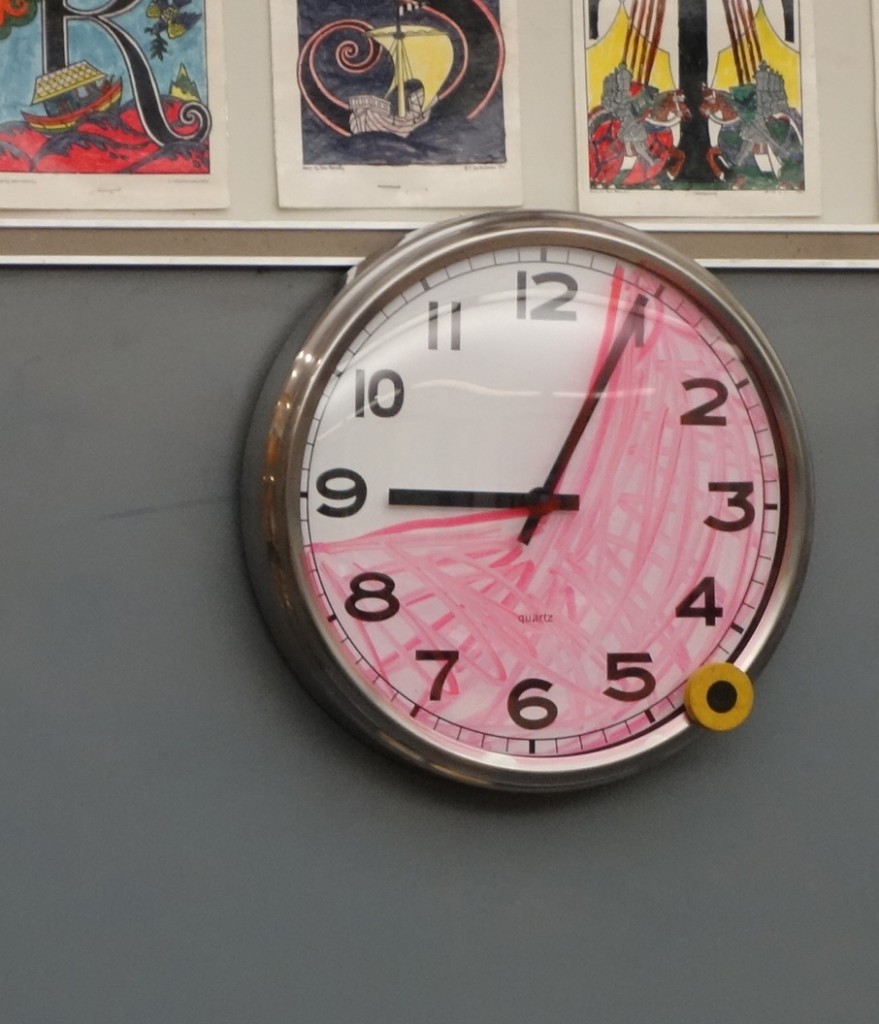“How did it get so late so soon?” ― Dr. Seuss
An article appeared in the NY Times Review of Books recently: “Pause! We Can Go Back!” It discusses a book by David Sax called The Revenge of Analog: Real Things and Why They Matter. The analog examples cited in the review did not include clocks, but I hope they are discussed in the book. At some point, I plan to read it and find out . . . when I have the time.
Diane and I have talked about the value of analog clocks off and on for several years. The conversation was intensified this year by a workshop she attended that encouraged teachers to help students learn to manage time by understanding it better in a spatial sense.
In the blog entry for November 14 (part 1), I wrote about our children’s understanding of time in connection with the Terra Nova testing that we were doing. Below is most of that essay, reprinted here because the book review got me thinking about it again. It continues to seem like an important part of every child’s education, one that may be getting overlooked.
______________________
Because so many of [our students] are surrounded by digital clocks and wristwatches, they have not developed a visual/spatial grasp of the units of time or the passage of time. I said on Friday that we were changing to a different activity at “a quarter to twelve.” I heard one student turn to another and ask, “What’s a quarter to?”
Every classroom at Miquon has at least one analog clock. To what is it analogous? To the circular nature of time and the infinite number of units that exist between the hours, minutes, and seconds that are marked on the face. A digital timepiece jumps from one unit to another — however small and precise its numbers may be — skipping the endless number of fractional parts in between its programmed units. An analog clock’s hands move smoothly around the circle, touching all of the infinite number of fractions between, for example, 3:04:27 and 3:04:28. It models the continuous rate of change that is part of the nature of time.
An analog clock gives us a visual representation not only of what time it is now but also what time it was and what time it will be. It is [also] a pie chart that shows the customary fractions of an hour that we reference when we speak of quarter after, half past, and quarter to. A digital clock displays a single, constantly changing set of numbers in isolation. It’s an entirely different and very sparse way of communicating about time.
This year, we did something new and very successful during the Terra Nova testing. Diane had gone to a professional development workshop that included some strategies for helping students with time management and planning. In response to what she learned, she brought to our two classrooms four clocks that had a metal rim (something that took her most of a weekend afternoon to locate!) and a clear plastic cover on the face. The metal rim was needed to hold a magnet, and the face could be written on with a whiteboard marker. Before we started each timed sub-test, we colored in the amount of time the test allowed and placed a colorful magnet approximately at the halfway point.

Now students could see the amount of time they had as something visual — not just a number that would come up sometime in the future.They could also readily see how close they were to the halfway point in their allotted time and compare it to where they were with the number of questions that remained. One student commented that the magnet made him anxious at first, but then it made him less stressed because he found that he was usually where he needed to be when the halfway point was reached.
In recent years, we have sometimes had a few students in fifth or sixth grade who have never learned to read what some of them call a “face clock” — something that would have been very unusual before those digital clocks came along. Learning to “tell time” from an analog clock was a skill we learned at home, along with tying our shoes . . . before the age of Velcro.
_______________
We still need to know how to tie a knot or bow that can be easily undone, however our shoes may fasten these days, and we still need to have a deep understanding of time, despite the increasingly-digital world in which we live.
